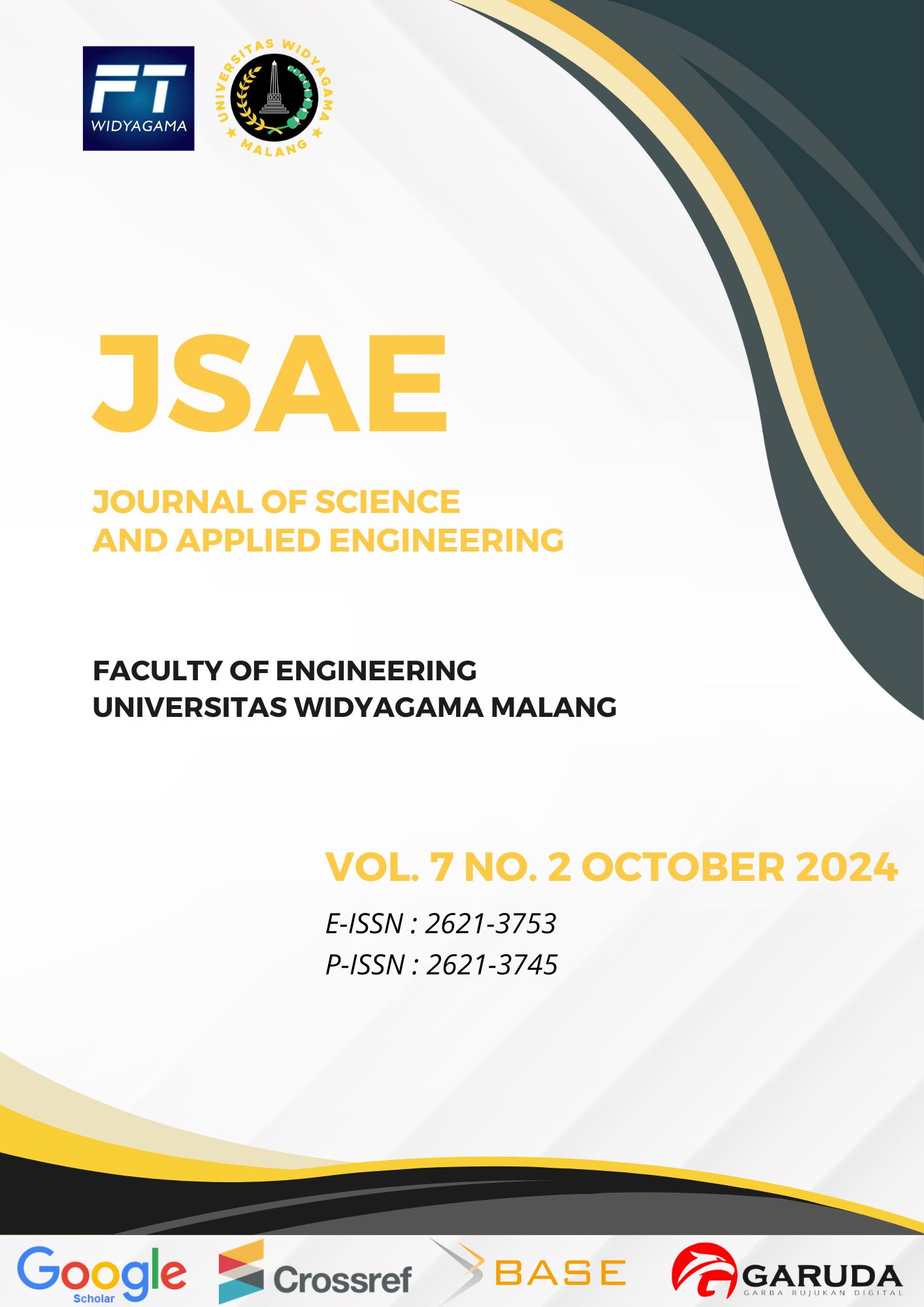REVERSE ENGINEERING AND MODIFICATION OF WIND TURBINE BLADE THROUGH 3D SCANNING AND CFD 6DOF ANALYSIS
DOI:
https://doi.org/10.31328/jsae.v7i2.6599Keywords:
Wind turbine, reverse engineering, design, energyAbstract
Efforts to increase the potential of low-speed wind energy can be achieved by optimizing blade shape. Reverse engineering is a method used to replicate components that will be developed or produced domestically, thereby reducing import value and wait times for ordering components. In this study, blades from foreign production will be tested through reverse engineering using a Scan-arm 3D Scanner. The result of the 3D scanning process, which is in the form of a point cloud, is processed with Rev Eng software to form a mesh. Then, the geometry data in mesh form is exported in .stl format for further processing in CAD software. The geometry modification process is carried out for optimization. The results of the modification process are then analyzed using CFD (Computational Fluid Dynamics) with the 6 degrees of freedom method. The torque and rotational speed obtained from the CFD analysis are used to calculate the theoretical mechanical power. The aim of this research is to modify the blade obtained through reverse engineering. By using the latest technology in the field of reverse engineering, the modification process is conducted to obtain blade geometry that can operate at low wind speeds. The Detailed Engineering Design (DED) data from each blade modification serves as a reference for the production/manufacturing of the reverse-engineered blade. The reverse engineering process can accelerate product design and development. By using a 3D scanner, complex geometric shapes that are difficult to interpret can be accurately digitized. In the reverse engineering process of the turbine blades, two modified variants were made. From the results of the CFD 6DoF method simulation, it was found that variant 1 had better aerodynamic properties than the original with changes in twist and an increase in the blade tip width. Meanwhile, variant 2, with modifications only to the twist angle, showed worse performance.References
[1] N.W. Hesty, Dian G.C., Aminuddin (2022). Estimasi Potensi Energi Angin Indonesia Menggunakan Model Weather Research and Forecast- Four Dimension Data Assimiliation (WRF-FDDA). Jurnal Sains Dirgantara Vol 19 No 2 11-20 (2022)
[2] Kris Witono, Moh Nasir, Elka Faizal, Hangga Wicaksono, Bayu Pranoto.(2019). Pengaruh Model Sudu Overlap dan Helix pada Proses Inisiasi Putaran Turbin Savonius. Otopro : Vol 15 No 1 Nov 2019
[3] Wahyudi, B., Faizin, A., Setiawan, A., Susilo, S. H., & Wicaksono, H. (2022). Simulation study of horizontal axis wind turbine using PVC pipe propeller with elbow tip. EUREKA: Physics and Engineering, (5), 67-76.
[4] H Wicaksono, SH Susilo, B Pranoto, M Fakhruddin. (2020). “Initial Rotation Characteristic Investigation of a Hybrid Savonius-Darrieus Wind Turbine using 6 DOF Computational Fluid Dynamics”. Mekanika: Majalah Ilmiah Mekanika 20 (1), 9-17
[5] Febriyanto, D., Wicaksono, H., Pranoto, B., & Muzaki, M. (2023). ANALISIS SUDUT SERANG TERHADAP KARAKTERISTIK AERODINAMIKA PADA BILAH 4412 RPM RENDAH DENGAN METODE CFD 6DOF. Otopro, 19(1), 24–33. https://doi.org/10.26740/otopro.v19n1.p24-33
[6] Susanto, S. A., Wicaksono, H., Firmansyah, H. I., & Fakhruddin, M. (Year). Aerodynamic study of chord length effect in low speed wind turbine using 6 DoF CFD method. Journal of Science and Applied Engineering, 6(2), 30–39. https://doi.org/10.31328/jsae.v6i2.4820
[7] Firman Hartono dan Arizal. 2013. Analisis Computational fluid dynamic(CFD) Ruang Bakar Mesin Turbojet TJE500FH V.1. Jurnal Teknologi Dirgantara Vol. 10 No. 2 Desember 2013 : 81-92
[8] H. Beri, Y. Yao, Double multiple stream tube model and numerical analysis of vertical axis wind turbine, Energy Power Eng. 3 (2011) 262e270.
[9] Y.T. Lee, H.C. Lim, Numerical study of the aerodynamics performance of a 500W Darrieus-type vertical axis wind turbine, Renew. energy 83 (2015) 407e415.
[10] S. Roy, U. Saha, Review on the numerical investigations into the design and development of Savonius wind rotors, Renew. Sustain. Energy Rev. 24 (2013) 73e83.
[11] N.K. Sarama, A. Biswas, R.D. Misra, Experimental and computational evaluation of Savonius hydrokinetic turbine for low velocity condition with comparison to Savonius wind turbine at the same input power, Energy Convers. Manag. 83 (2014) 88e98.
[12] Kim, S. U., Roh, J., Im, H., & Kim, J. (2022). Anisotropic SpiralNet for 3D Shape Completion and Denoising. Sensors, 22(17), 6457. https://doi.org/10.3390/s22176457




